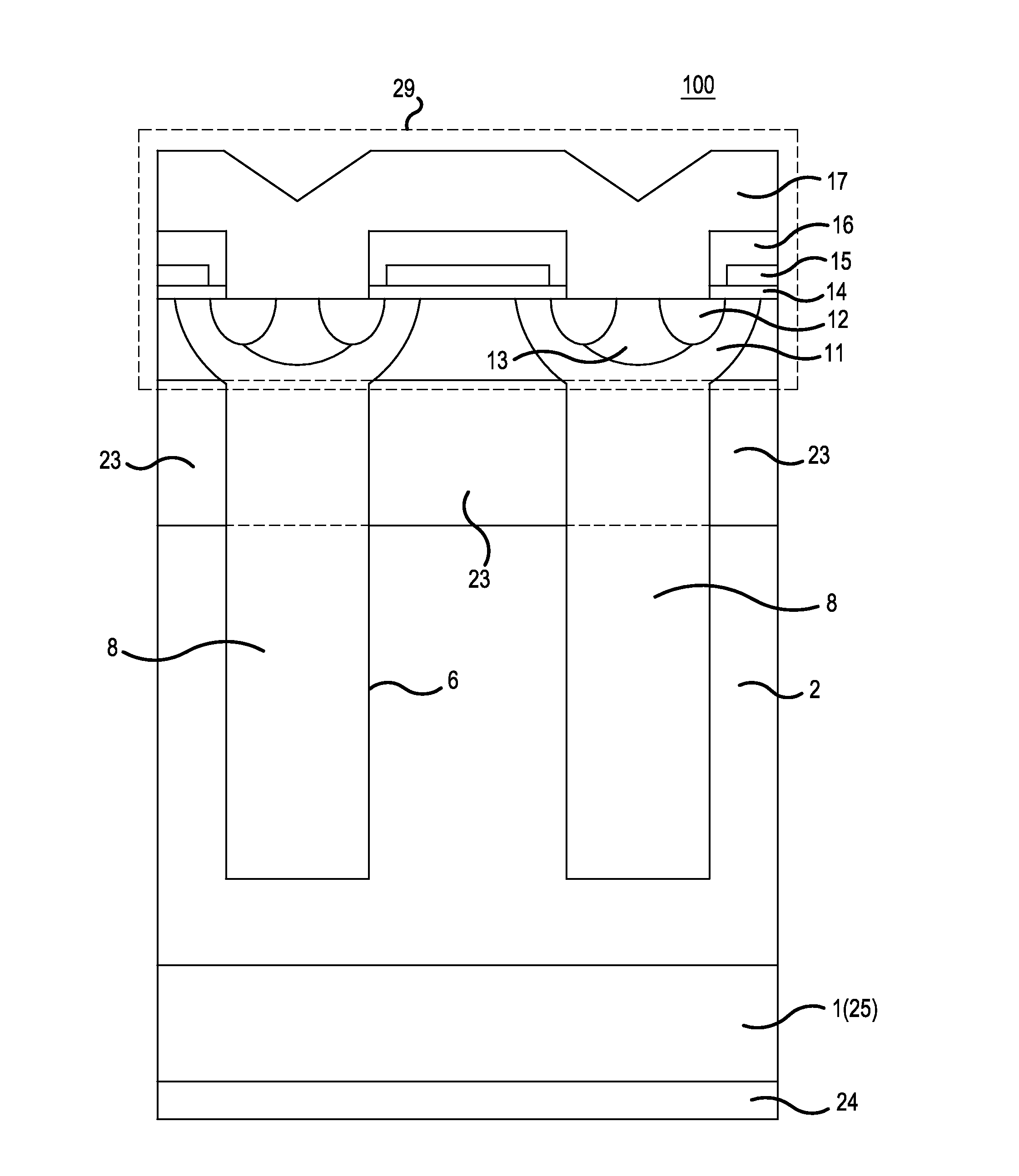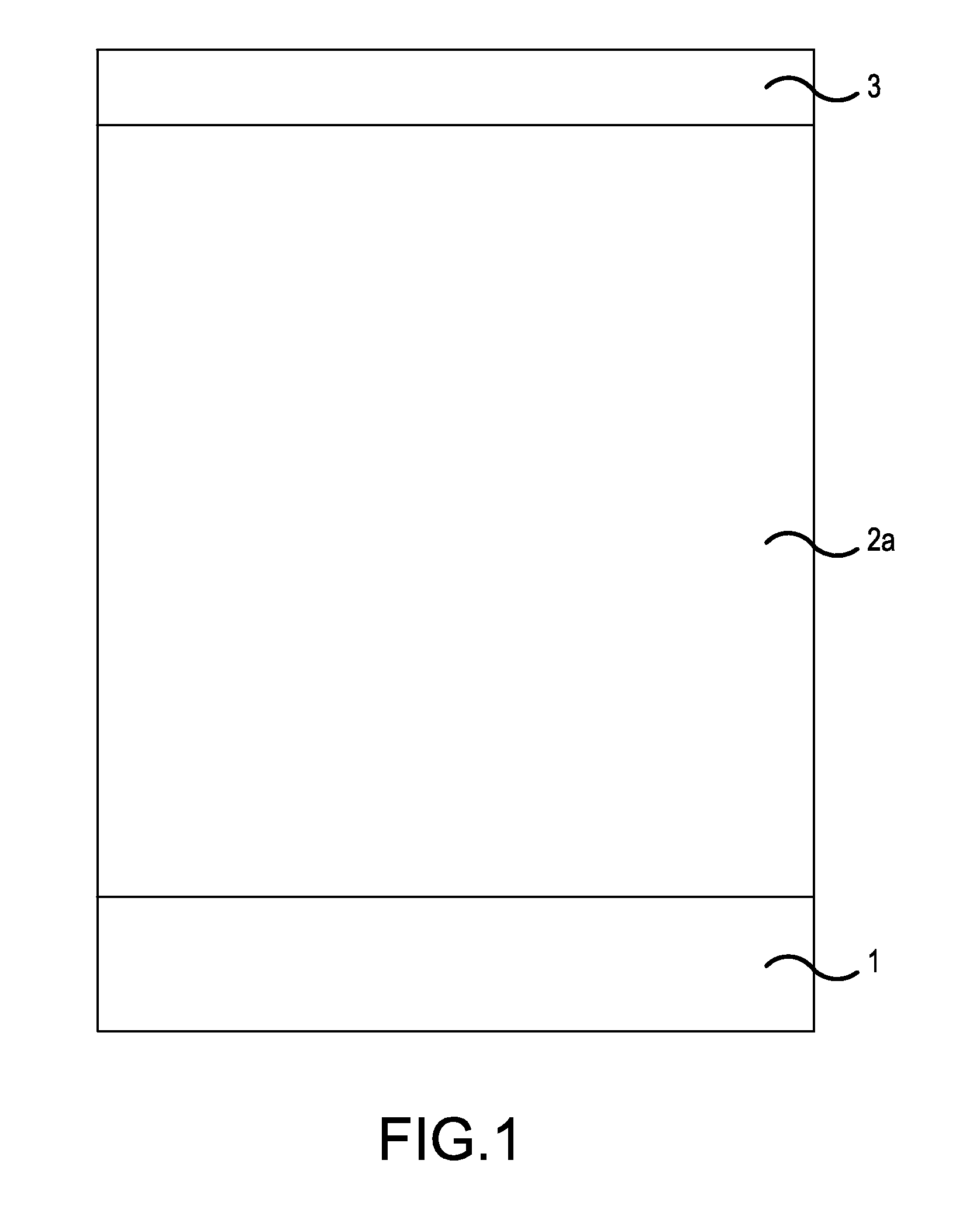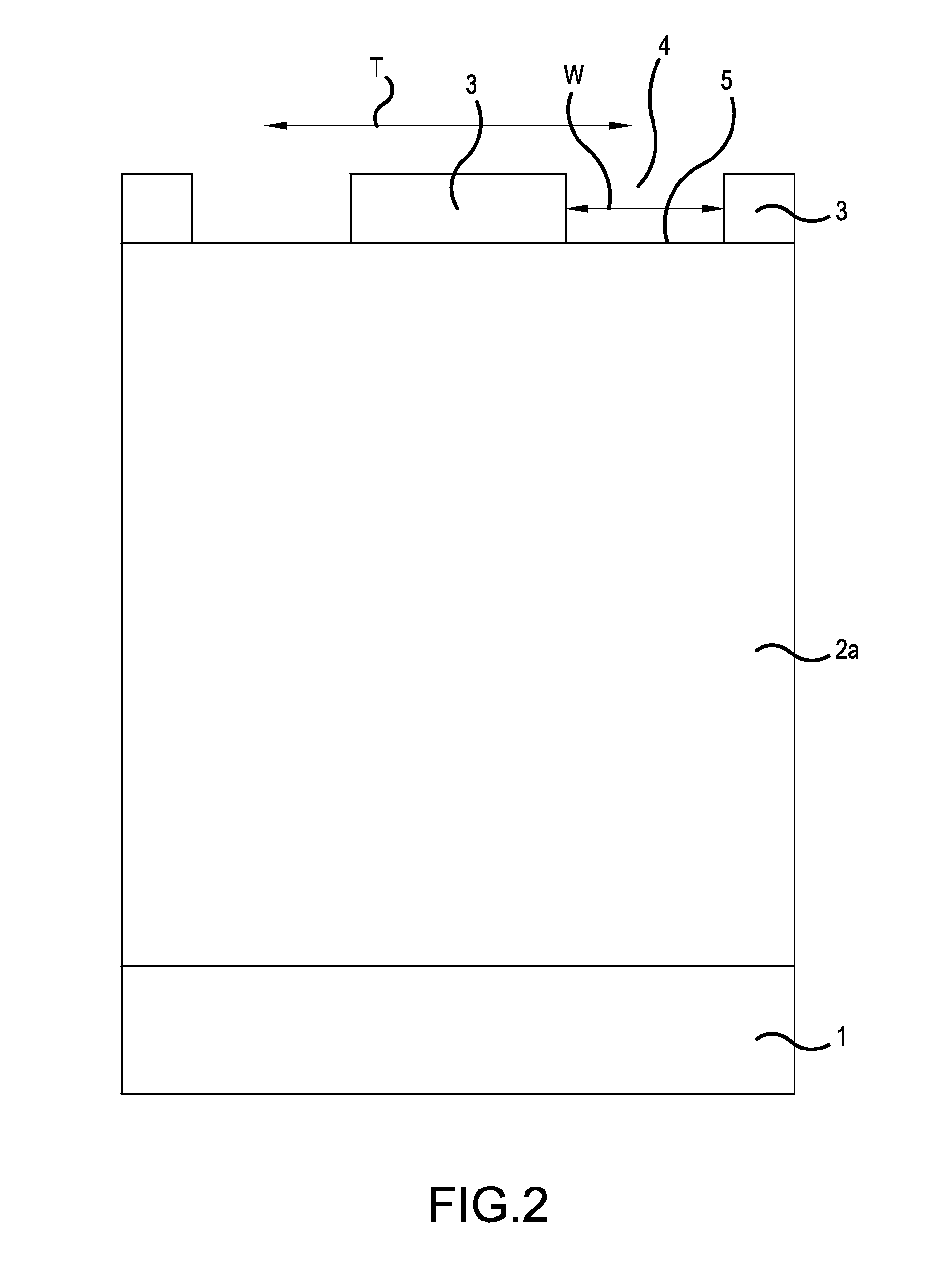Method of manufacturing a super-junciton semiconductor device
- Summary
- Abstract
- Description
- Claims
- Application Information
AI Technical Summary
Benefits of technology
Problems solved by technology
Method used
Image
Examples
embodiment example 1
[0066]FIGS. 1 through 9 show a method of Embodiment Example 1 of the present invention for manufacturing super-junction semiconductor device 100 and are sectional views of essential parts presented in the sequence of manufacturing steps. Although the following description of Embodiment Example 1 is made basically about a super-junction MOSFET with a withstand voltage of 600 V class, the present invention can be applied to any devices with other withstand voltage classes by appropriately adjusting film thicknesses, dimensions, and other parameters.
[0067]In the following description, a first conductivity type is an n type and a second conductivity type is a p type. However, the conductivity type can be reversed.
[0068](1) First, as shown in FIG. 1, on n type semiconductor substrate 1 of silicon with a thickness of several hundred microns, n type semiconductor layer 2a with a thickness of about 45 μm is formed by epitaxial growth, and on n type semiconductor layer 2a, oxide film 3 of Si...
embodiment example 2
[0090]FIG. 12 is a sectional view showing an essential part of a super-junction semiconductor device 200 in a step of manufacturing the device 200 according to a second embodiment of the invention. This drawing corresponds to FIG. 7 in Embodiment Example 1. This Embodiment Example 2 differs from Embodiment Example 1 in that Embodiment Example 2 uses irradiation particles of helium ions 27, i.e., 3He++ and 4He++ in place of protons 18. In the case of helium ions 27, a temperature necessary for donorization is about 500° C. and higher than in the case of protons 18. Consequently, damage to a an electrode is a concern. In order to cope with this problem, the particle irradiation and subsequent heat treatment are favorably carried out before forming the drain electrode and the source electrode.
[0091]The helium ion irradiation has similar effects as the proton irradiation. FIG. 12 indicates helium ion irradiation 26 and helium ion irradiation layer 28.
embodiment example 3
[0092]FIG. 16 and FIG. 17 illustrate a method of manufacturing a super-junction semiconductor device 300 according to the third embodiment of the present invention, in which FIG. 16 is a sectional view of an essential part of the device in a manufacturing step corresponding to FIG. 7 in Embodiment Example 1 and FIG. 17 is a plan view of a shielding mask used in the step of forming the structure of FIG. 16.
[0093]N type semiconductor layer 2 is subjected to proton irradiation, but p type semiconductor layer 8 is prevented from irradiation using shielding mask 41 made of aluminum. The shielding mask is not limited to aluminum but chromium, gold, or other materials that can shield the irradiating ions can be used.
[0094]Because p type semiconductor layer 8 is not irradiated by protons, the p type impurity concentration does not decrease, which improves charge balance as compared with the case of Embodiment Example 1. Thus, a necessary withstand voltage is readily secured and the n type i...
PUM
 Login to View More
Login to View More Abstract
Description
Claims
Application Information
 Login to View More
Login to View More - R&D
- Intellectual Property
- Life Sciences
- Materials
- Tech Scout
- Unparalleled Data Quality
- Higher Quality Content
- 60% Fewer Hallucinations
Browse by: Latest US Patents, China's latest patents, Technical Efficacy Thesaurus, Application Domain, Technology Topic, Popular Technical Reports.
© 2025 PatSnap. All rights reserved.Legal|Privacy policy|Modern Slavery Act Transparency Statement|Sitemap|About US| Contact US: help@patsnap.com



